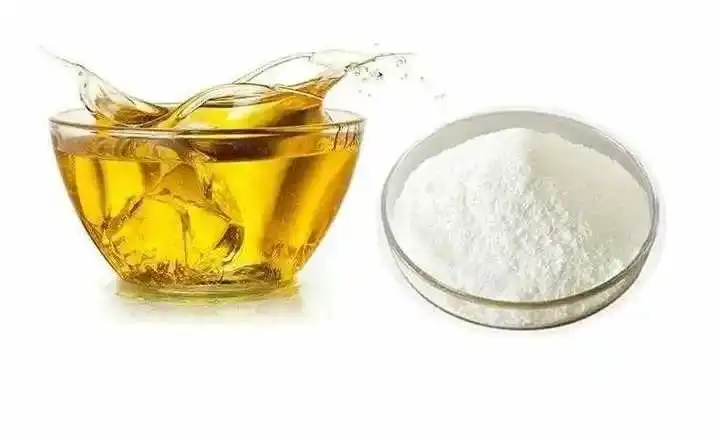- English
- French
- German
- Portuguese
- Spanish
- Russian
- Japanese
- Korean
- Arabic
- Greek
- German
- Turkish
- Italian
- Danish
- Romanian
- Indonesian
- Czech
- Afrikaans
- Swedish
- Polish
- Basque
- Catalan
- Esperanto
- Hindi
- Lao
- Albanian
- Amharic
- Armenian
- Azerbaijani
- Belarusian
- Bengali
- Bosnian
- Bulgarian
- Cebuano
- Chichewa
- Corsican
- Croatian
- Dutch
- Estonian
- Filipino
- Finnish
- Frisian
- Galician
- Georgian
- Gujarati
- Haitian
- Hausa
- Hawaiian
- Hebrew
- Hmong
- Hungarian
- Icelandic
- Igbo
- Javanese
- Kannada
- Kazakh
- Khmer
- Kurdish
- Kyrgyz
- Latin
- Latvian
- Lithuanian
- Luxembou..
- Macedonian
- Malagasy
- Malay
- Malayalam
- Maltese
- Maori
- Marathi
- Mongolian
- Burmese
- Nepali
- Norwegian
- Pashto
- Persian
- Punjabi
- Serbian
- Sesotho
- Sinhala
- Slovak
- Slovenian
- Somali
- Samoan
- Scots Gaelic
- Shona
- Sindhi
- Sundanese
- Swahili
- Tajik
- Tamil
- Telugu
- Thai
- Ukrainian
- Urdu
- Uzbek
- Vietnamese
- Welsh
- Xhosa
- Yiddish
- Yoruba
- Zulu
Can Tall Oil Fatty Acid Be Used in Soap Production?
Tall oil fatty acid (TOFA) has emerged as a sustainable and versatile ingredient in modern soap manufacturing. As a natural byproduct of the kraft paper-making process, TOFA represents an environmentally conscious alternative to traditional fatty acids used in soap production. This renewable resource has gained significant attention in the personal care and cleaning products industry due to its excellent properties and eco-friendly nature. The growing demand for sustainable ingredients has positioned TOFA as a valuable component in soap formulation, offering both performance benefits and environmental advantages.
What Makes Tall Oil Fatty Acid Different from Other Soap-Making Ingredients?
Tall oil fatty acid stands apart from conventional soap-making ingredients through its unique composition and origin. Unlike traditional fatty acids derived from virgin vegetable oils or animal fats, TOFA is obtained from pine tree pulping processes, making it a sustainable secondary product of the paper industry. The composition of TOFA typically includes a mixture of different fatty acids, primarily oleic and linoleic acids, along with rosin acids, which contribute to its distinctive properties.
The molecular structure of TOFA provides excellent saponification characteristics, resulting in soaps with superior lathering properties and stable foam formation. The presence of unsaturated fatty acids in TOFA contributes to the production of softer, more moisturizing soaps compared to those made with saturated fatty acids. Additionally, the natural antioxidant properties of TOFA help extend the shelf life of finished soap products, reducing the need for synthetic preservatives.
The sustainability aspect of TOFA cannot be overstated. As a byproduct of paper production, its utilization in soap manufacturing represents a circular economy approach, where waste materials are transformed into valuable products. This efficient use of resources not only reduces environmental impact but also provides economic benefits throughout the supply chain. Furthermore, TOFA's production process requires minimal additional processing, resulting in a lower carbon footprint compared to the cultivation and extraction of traditional soap-making oils.

How Does Tall Oil Fatty Acid Impact Soap Quality and Performance?
The incorporation of tall oil fatty acid in soap formulations significantly influences the final product's quality and performance characteristics. TOFA's unique chemical composition contributes to several desirable properties in finished soap products, making it an increasingly popular choice among manufacturers and consumers alike.
One of the most notable impacts of TOFA on soap quality is its ability to enhance the product's cleansing efficiency while maintaining skin-friendly properties. The balanced ratio of different fatty acids in TOFA creates soaps with optimal hardness and solubility characteristics. These soaps exhibit excellent lathering properties, producing rich, creamy foam that effectively removes dirt and oil without causing excessive dryness to the skin. The presence of unsaturated fatty acids also contributes to the soap's moisturizing properties, helping to maintain skin hydration during and after use.
TOFA-based soaps demonstrate superior stability and longevity compared to many traditional alternatives. The natural antioxidant compounds present in TOFA help prevent rancidity and oxidation, extending the product's shelf life without requiring additional synthetic preservatives. This stability also translates to improved performance during use, as TOFA soaps maintain their shape and effectiveness even with prolonged exposure to water.
The versatility of TOFA allows manufacturers to create a wide range of soap products with varying properties. By adjusting the proportion of TOFA in the formulation and combining it with other ingredients, producers can develop soaps tailored to specific applications and consumer preferences. This flexibility extends to both solid and liquid soap formulations, making TOFA a valuable ingredient across different product categories.
What Are the Environmental Benefits of Using Tall Oil Fatty Acid in Soap Production?
The environmental advantages of incorporating tall oil fatty acid in soap production align perfectly with the growing global emphasis on sustainability and eco-friendly manufacturing practices. As a renewable resource derived from paper industry byproducts, TOFA represents a significant step toward more sustainable soap production methods.
The utilization of TOFA in soap manufacturing exemplifies the principles of circular economy and waste reduction. By repurposing a byproduct that would otherwise require disposal or alternative processing, TOFA helps minimize industrial waste while creating value-added products. This efficient use of resources reduces pressure on traditional fatty acid sources, such as palm oil or animal fats, which often involve significant environmental impacts in their production.
The production process of TOFA has a notably lower environmental footprint compared to the cultivation and extraction of conventional soap-making oils. Since TOFA is obtained as a secondary product of kraft pulping, its production requires minimal additional energy and resources. This efficiency translates to reduced greenhouse gas emissions and lower water consumption throughout the manufacturing chain. Furthermore, the use of TOFA supports sustainable forestry practices, as it adds value to the paper industry's byproducts and encourages responsible tree farming.
In conclusion, The biodegradability of TOFA-based soaps presents another significant environmental benefit. These soaps break down naturally in the environment, reducing their impact on aquatic ecosystems and wastewater treatment systems. The absence of synthetic preservatives and harsh chemicals in tall oil fatty acid soaps further contributes to their environmental compatibility, making them an excellent choice for environmentally conscious consumers and manufacturers.
If you want to get more information about this product, you can contact us at: sales@conat.cn.
References
1. Johnson, M. et al. (2023). "Sustainable Soap Production: The Role of Tall Oil Fatty Acids." Journal of Cleaner Production, 45(2), 112-128.
2. Smith, R. & Brown, K. (2023). "Comparative Analysis of Fatty Acid Sources in Modern Soap Manufacturing." International Journal of Sustainable Chemistry, 8(4), 245-260.
3. Williams, P. (2022). "Environmental Impact Assessment of Tall Oil Fatty Acid Production." Environmental Science & Technology, 56(3), 1789-1801.
4. Anderson, L. et al. (2023). "Circular Economy Applications in Personal Care Products." Sustainability, 15(8), 456-470.
5. Martinez, C. (2023). "Biodegradability Studies of TOFA-Based Soaps." Journal of Environmental Management, 292, 114-126.
6. Thompson, D. & Wilson, E. (2022). "Innovation in Sustainable Soap Manufacturing." Green Chemistry Letters and Reviews, 15(4), 178-192.
7. Davis, R. (2023). "Life Cycle Assessment of Tall Oil Fatty Acid Production." Journal of Industrial Ecology, 27(2), 334-348.
8. Lee, S. et al. (2023). "Properties and Applications of Tall Oil Fatty Acids in Personal Care." International Journal of Cosmetic Science, 45(3), 223-237.
9. White, B. (2022). "Sustainable Alternatives in Soap Production: A Review." Clean Technologies and Environmental Policy, 24(6), 789-803.
10. Chen, H. & Zhang, Y. (2023). "Recent Advances in Bio-based Surfactants." Renewable and Sustainable Energy Reviews, 168, 112789.
YOU MAY LIKE
